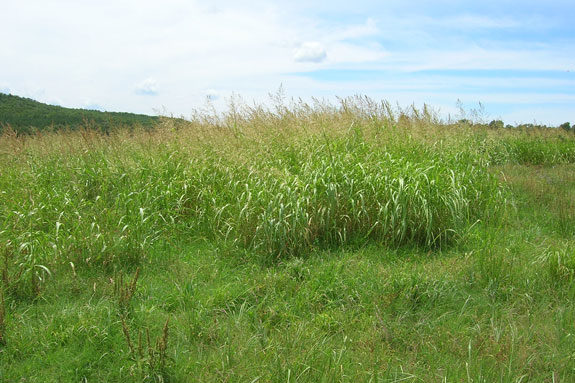Fortunately, the problem side of johnsongrass occurs only seasonally, but that season has arrived full force. Summer heat and drought, while serving to illustrate the Dr. Jekyll characteristics of the species, also brings out its Mr. Hyde component.
Producers on the ‘gotta-love-it’ side, usually ask, “What have you got against johnsongrass?” I’m quick to respond, “Nothing in regards to its forage quality, dry weather production and persistence!” Presently, a survey of the green, growing component of many fields will cause you to note johnsongrass as the source.

I’ve taken samples of johnsongrass hay that will top the relative feed value chart, while also cranking out an excellent yield. Dairymen have, historically, appreciated that quality and volume can help fill the milk tank during the season of ‘summer slump,’ which knocks out many other forages. Who can argue with that?
However, the same heat and drought conditions that help highlight favorable johnsongrass traits also elevate the level of prussic acid, or cyanide poison in the plant. Fortunately this toxin dissipates when johnsongrass is cut and cured as during normal haying. So, most “love it” supporters are often viewing johnsongrass from its haying perspective.
Unfortunately, drought conditions reduce forage volume in pastures. When additional grazing is needed, producers often have to consider grazing hay fields that contain johnsongrass. Today’s higher cattle prices suggest that “trial and error” is not an economical alternative and a strong sense of caution prevents opening the gate.
The issue becomes more problematic when producers realize there is no ‘quick’ test to determine the level of prussic acid. Unfortunately, it only takes one cow and about 30 minutes to know if a problem exists!

Where johnsongrass is present in sufficient volume, I suggest haying as an option. If present in scattered clumps, I suggest the option of brushogging (not mowing) in order to shatter the stems. Allow the plants to cure and then turn in cattle, which is usually not a complete loss of forage since they will clean up a lot of the johnsongrass because of its feed value.
If there are other options out there, I’m certainly open to hearing them.
I haven’t touched on the nitrate toxicity risk of johnsongrass, which if present at toxic levels will not go away after haying. If one positive thing came out of the poultry litter moratorium in many watershed areas, it‘s the reduction in forage nitrate levels. Although most forage types may present a risk if excessive nitrates are applied, johnsongrass is classified as a ‘nitrate accumulator’, meaning that it holds top ranking in regards to risk.
Again, for producers fertilizing out of their back pocket, rather than a poultry house, the risk of nitrate toxicity has virtually been eliminated at current commercial nitrogen prices. Johnsongrass is only one of the plants that present a summer risk for toxicity. Another is perilla mint, which we will address next week.
For more information on forages, visit www.uaex.edu or contact your county extension office. FG
—University of Arkansas press release
PHOTOS
TOP: A clump of johnsongrass with seed heads stands out in in this field.
MIDDLE: A clump of young johnsongrass.
BOTTOM: Distinctive Johnsongrass seedheads. University of Arkansas Division of Agriculture photos by John Jennings.










